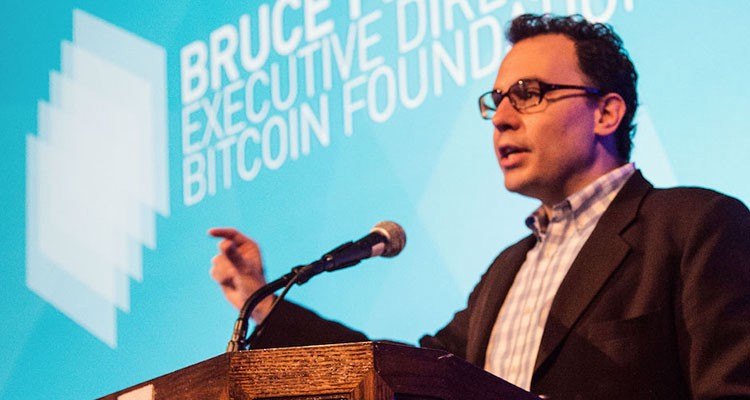Bugs, Liquidity And Yields: The Rise Of The DeFi Economy

The DeFi sector is currently playing an essential role in the ongoing crypto renaissance. The possibility of accessing improved financial services without all the hurdles associated with conventional banking processes has somewhat emerged as a compelling narrative. More so, the introduction of unique means of capitalizing on the interoperability and decentralized nature of DeFi protocols has spurred the sector to exhibit bubble-like characteristics. And so, it has become imperative to separate organically-generated developments and growth generated from hype.
In this article, I will explore the DeFi sector and some of the arguments and counterarguments that have trailed its success in recent months.
DeFi is Bigger and Better

The concept of decentralization has been part and parcel of the crypto industry since 2009. However, it wasn’t until 2017 that developers began to introduce a wide variety of applications designed to tackle the issues prevalent in the traditional financial industry. Although a majority of the solutions implemented during this unprecedented boom failed to deliver on the promises made to investors, those projects, which managed to maneuver inherent challenges, have set viable frameworks for new generation DeFi protocols.
What we have today are uniquely engineered products looking to incorporate user-friendly interfaces, accessible features, and unprecedented returns generating schemes. When it comes to the financial sector, it is vital to harness and implement these components to increase engagement. No one wants to utilize a tool with little or no added benefits over conventional financial systems. The whole essence of having a DeFi-powered ecosystem is to have control over one’s finances without downplaying security or usability.
Thanks to the progress made in this regard, the DeFi ecosystem has expanded beyond even the most optimistic expectations. From the beginning of 2020, the total value of assets locked in the DeFi market has surged by over $5 billion. In that duration, several DeFi protocols have outperformed Bitcoin and a majority of the top thirty cryptocurrencies by market cap. Hence, not only has bitcoin lost some of its dominance in the market, but the market visibility of Ethereum has also gone through the roof. This is because Ethereum is an essential blockchain network, where a large chunk of developers have chosen to deploy their DeFi applications.
More interesting is the fact that it is possible to combine the functionalities of a couple of DeFi-infrastructures to build a completely new one. In other words, there are little to no restrictions, especially when it comes to liquidity and interoperability. Jon Jordan, communications director of DappRadar, echoed this sentiment when he told Cointelegraph:

Jon Jordan, communications director of DappRadar
“Because DeFi runs on an open permissionless blockchain, interoperability of dapps and tokens is a massive advantage. One dapp can come up with a new feature — such as flash loans — and then other dapps can integrate that into their product without asking permission. This interoperability has been the underlying reason for the current Yield Farming explosion, for example.”
Likewise, Stani Kulechov, CEO of Aave, holds a similar view as he believes that the permissionless nature of the ecosystem provides limitless opportunities for liquidity. He stated:

Stani Kulechov, CEO of Aave
“The biggest advantages of DeFi is that its permissionless to participate (no KYC, credit score, etc.), same rules apply to everyone, liquidity is ’borderless’ (you can access the market from anywhere & anytime as long as you have internet), and it’s non-custodial so you have full control over your money and you can use it however you want.”
Due to these possibilities, it comes as no surprise that the scope of the DeFi landscape is expanding exponentially. Developers are constantly tweaking the underlying technology of these systems to provide new iterations of financial innovations. And so, there is an increased dependency on decentralized infrastructures, particularly in the core sectors of the finance industry.
Already, the concept of DeFi lending is on the rise, even as market leaders like Maker, Compound, and Aave continue to lead the way in terms of execution and availability. The same level of advancements is brewing in the monetary and banking sector. Much of this growth is down to the establishment of decentralized stablecoins like DAI. The DeFi narrative has also birthed financial marketplaces, which encompass decentralized exchanges, prediction markets, derivatives markets, and the likes.
Perhaps, the most impressive feat is how developers have started to facilitate ecosystems that aptly combines two or more applications of DeFi technology. For instance, kittieFight is looking to merge crypto gambling and lending infrastructures to enable a platform providing participants with multiple streams of income. Users can either fund jackpots and provide liquidity for a chance of earning interests or place bets to receive shares of increasingly valued jackpots. This framework, which hinges on several components of DeFi technology, exemplifies the level of disruption poised to reinvent the way we interact with financial instruments.
Liquidity Fuels That DeFi Narrative
At the center of all these is an emerging phenomenon critical to the sustenance of the DeFi landscape. This concept is popularly called yield farming and, in some cases, liquidity mining. Both require investors to deposit or lock assets in DeFi protocols to generate interests. For developers, it is a simple and yet reliable avenue to access funds and liquidity, which are integral to the sustainability of their platforms. Think of it as a double-edged sword providing improved earning power to investors and capital for the day-to-day operations of DeFi ecosystems.
The proliferation of this model, to an extent, has spurred the upsurge of the DeFi market. The uptrend of market activity and participation is linked to new iterations in the liquidity mining models that reward active participants with governance tokens. These tokens give holders the power to have a say in the changes or upgrades implemented on DeFi platforms. Kain Warwick, a co-founder of Synthetix, explains this in an interview with Cointelegraph:

Kain Warwick, a co-founder of Synthetix
“It’s always possible that people will farm the yield and then find a fresh field, so bootstrapping liquidity is not a guarantee that your protocol will retain users. […] But bootstrapping liquidity with some sort of incentive is a great way to attract newcomers because if you have anything resembling product-market fit, then there is likely to be some stickiness.”
Binance Co-Founder and CEO Changpeng Zhao (CZ) also stressed the importance of the framework of automatic market makers in the DeFi sector. He commented:

Binance Co-Founder and CEO Changpeng Zhao (CZ)
“I think DeFi is a really innovative space, and I think that’s really good. Initially, when people talk about DeFi they think about lending so you can lend your coins but now, you lend the coins to provide liquidity. When the liquidity is good, people trade more and trade more easily. I think automatic market makers are an interesting invention, and it’s really simple. That aspect of it will stay.”
While most crypto participants believe that liquidity mining encourages “early participation and partial ownership,” some expect it to fuel a bubble market. As argued by Andre Cronje, the founder of the yEarn protocol, liquidity mining promotes an unhealthy paradigm that does more harm than good. He explained:

Andre Cronje, the founder of the yEarn protocol
“All the yield chasers just running in to farm yield and then leaving. But after they have ruined the crops, sometimes, a stronger crop can grow, and some locusts remain, and they end up being symbiotic instead of the initial parasitic. […] All liquidity mining currently is, is getting paid for propped up TVL.”
Hence, there are concerns that there are no accurate metrics systems for determining the true value of the DeFi market since Total Value Locked (TVL), which is the commonly used valuation model, does not account for some vital factors. Nonetheless, it is critical to note that the DeFi narrative is nascent, and it will take a while to establish frameworks effective enough to encapsulate its complexities.
Clem Chambers, the CEO of private investors website ADVFN.com, explains this aptly in an article published on Forbes. He wrote:

Clem Chambers, the CEO of private investors website ADVFN.com
“Boom! Instantly I was earning interest and I could see it rolling up in real-time. However, right now this technology is definitely version 1.0 (1. Ooooh!) and a messy thing. […] But, it works. It’s a Model T and it sets the trajectory of a future of financial services run from blockchains via smart contracts that will cut down or morph financial institutions as Amazon AMZN -0.4% cut down and is morphing retail.”
Furthermore, Chambers revealed that he plans to play around with DeFi tokens and exchanges and wait out the impending busts and lows. He added:
“My strategy is to be in on governance tokens now, just for a bit of fun in the initial run, then to buy (and trade if possible) the next series of bubbles and busts that always follow a tech revolution like this. Buy and hold is probably the best way to go. Buy and hold all the cool projects that you can actually play with. The scammers are undoubtedly on their way but the real deals amongst the oncoming cowpats will be a huge financial success and the only thing you need to do is skill up and separate the real from the scams.”
One of the issues Chambers and other experts highlight as a barrier to the DeFi narrative is the recurring scalability crisis plaguing the Ethereum blockchain. Following the explosion of DeFi, the Ethereum blockchain has had to facilitate more activities. As expected, the strain on Ethereum rigid infrastructure has caused an unreasonable rise in the cost of transactions and how long it takes to verify them. Although this imposes unnecessary burdens on Ethereum users, it has somewhat worked in favor of miners. Glassnode recently revealed that mining revenue has hit an all-time high.
“Miner revenue from fees on Ethereum has skyrocketed in the past two months, reaching an all-time high of around 18% (30d moving average). Conversely, this has brought the Fee Ratio Multiple (FRM) to lows never seen before on Ethereum. Created by Teo Leibowitz, the Fee Ratio Multiple (FRM) is defined as the ratio between the total miner revenue and transaction fees. FRM indicates how secure a chain is once block rewards disappear.”
To Audit Or Not To Audit
Another bone of contention is the risk inherent in smart contract-enabled financial solutions. Relying solely on smart contracts to do the job of banks and other intermediaries come with its own risk. Developers must ensure that there are no errors or loopholes in codes that could jeopardize the safety or viability of these protocols. The failure to audit protocols often leads to unimaginable loss on the part of investors and users. For instance, investors who opted for the yield farming opportunity of the Yam protocol got burnt because of an error in a single line of code. Unfortunately, it was impossible to fix this error, and subsequently, the price and the market cap of the token crashed to zero. The developers of this project, in a blog post, admitted that the protocol had a bug.
“Shortly after 7am UTC on Thurs August 13th, we submitted a governance proposal and cast a vote with what we originally believed were sufficient votes to be able to enact it. Shortly thereafter, with help from security experts, we concluded that the rebaser bug would interact with the governance module and prevent this proposal from succeeding.”
In light of this crisis, Crypto entrepreneur, Bruce Fenton, shared his thoughts on DeFi tokens. He said:

Crypto entrepreneur, Bruce Fenton
“Your DeFi tokens are junk. They are not a good form of money. You have no ownership of an enterprise. No rights to revenue. There is no real revenue. Governance is meaningless without rights. Total crap – often pushed by the same jokers who got rich on ICOs. Few understand this.”
In response to this, CEO of Trustswap, Jeff Kirdeikis, downplayed Fenton’s assertions and explained that even Bitcoin does not guarantee ownership of the network. He argued:

CEO of Trustswap, Jeff Kirdeikis
“No ownership of enterprise is how it goes for ANY utility token or ‘currency coin,’” the CEO of Trustswap Jeff Kirdeikis responded to Fenton’s tweet. “You’re gatekeeping what ‘has value’ here by saying only security tokens have value? Common. Owning BTC doesn’t give you ownership in enterprise or revenue either… Many people understand this,”
Regardless of the convoluting notions surrounding the present DeFi narrative, one thing is clear: the technology is potent enough to replace legacy financial infrastructures soon. Until then, the concept will continue to evolve with time.
